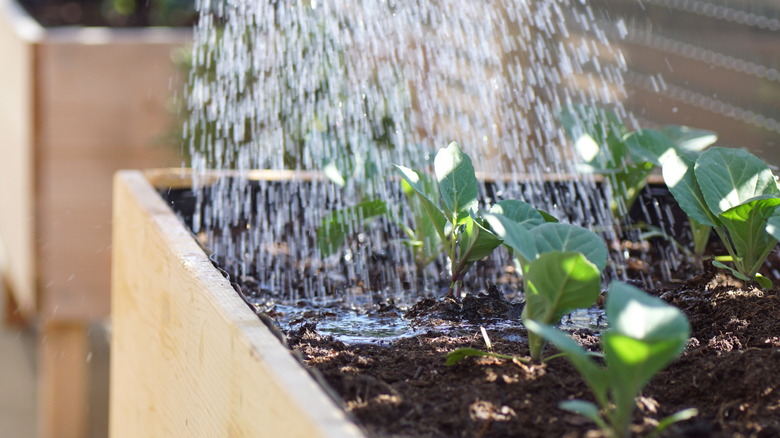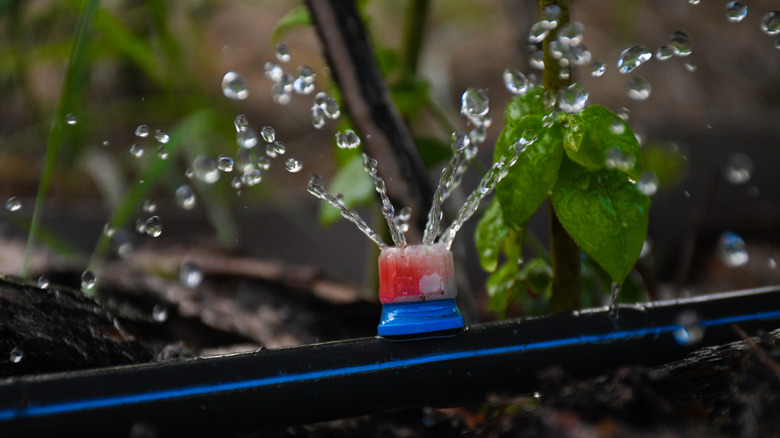This DIY Raised Bed Watering System Will Keep Your Plants Refreshed & Hydrated
Plants are never satisfied. You give them a new home in raised beds with no foot traffic, a fantastic (and fantastically expensive) soil mix, and a bunch of diverse and productive neighbors. But now they want more. "We're thirsty," they say in the droopy, plaintive language of plants. It turns out that raised beds use significantly more water than standard plantings. This happens because the soil is better-drained on average, and the better airflow dries things out more quickly. Fortunately, YouTuber Micah Mobley (@micahmobley555) has a way to put these complainers at ease: A PVC-based watering system that acts like high-end drip irrigation and can be assembled in an afternoon. Drip is one of the best irrigation systems for flower beds and vegetable beds alike.
The system uses your household water pressure and has no parts more complicated than a ¼-turn on/off valve. In Mobley's design, though, the on/off valve is used carefully so that rather than just allowing two states, it becomes a pressure control mechanism that lets him manage the flow for each individual bed. The lower pressure also eliminates the need to glue the components for each bed, so that the design can be more easily reconfigured than most budget-friendly DIY home garden watering systems.
How the PVC raised bed irrigation works
The design of Mobley's watering system is intuitive and simple, and far superior to overhead garden watering methods that can be bad for your plants. Water is brought from a nearby hose bibb via a ¾-inch PVC pipe that functions as a manifold with an outlet at each of his four raised beds. Outside each bed, the ¾-inch pipe is fitted with the aforementioned shutoff valve, and is then reduced for a ½-inch PVC pipe that is split into two lines and takes water into the beds.
One ½-inch pipe runs along each side of Mobley's raised beds. Along a straight line down each pip, he drilled 1/16-inch holes every 6 inches to emit water into the soil. According to the Utah State University extension service, the 1/16-inch hole size is perfect for a home garden drip irrigation system because it should have about the right flow rate and will allow small particles of soil that find their way into the system to pass through. The 6-inch spacing is perfect for growling plants like carrots and peas, and the easily reconfigurable pipes mean he can adjust that spacing for plants with larger or smaller water demands.
How does conventional drip irrigation measure up?
Drip irrigation systems from companies like Orbit and Rainbird can seem fiddly and complicated because they are... by which we mean you can configure them however you want. With all the various electric valves, controllers, and the like it would be easy to spend a lot of money on such a system. But they can also be configured exactly as Mobley's PVC system is, so we decided to compare prices. To keep things simple, we moved the valve to the ½-inch end of the design for both systems, and compared costs for a single raised bed with his design. The PVC system cost $15.38 per bed, while the drip irrigation system (composed of a mix of Orbit and Dig components from Home Depot) cost $12.19 per bed.
That $3.19 difference might seem negligible, but the fact that the drip irrigation gear was cheaper and is far more configurable in the long run might give one pause. It's not difficult to imagine a future in which Mobley expands his design, and it only takes 256 1/16-inch holes to equal a 1-inch hole — the max size of common household water lines. If Mobley's perforated PVC pipes are eight feet long, he's already at 128 holes — halfway there. With a traditional drip irrigation, you can adjust the release of emitters to accommodate additional pipe length, and many other options as well. Both approaches work well, but the conventional drip approach is a bit more robust.

